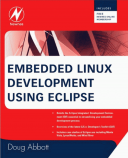Книга: Embedded Linux development using Eclipse
1.2 Eclipse Public License
1.2 Eclipse Public License
Open source software is released to the public under the terms of a license that grants users of the software certain rights, the most significant of which is access to the source code. The software is copyrighted by its author, but rather than using the copyright to restrict access and use, which is the usual case, the copyright becomes the means of enforcing the rights granted by the open source license. Because open source effectively “reverses” the rights granted by copyright, it is often referred to as “copyleft.”
Many users familiar with open source software may assume that the Gnu General Public License (GPL) is the one and only mechanism for making open source code available. In fact, there are over 50 different licenses certified by the Open Source Initiative, a non-profit body that reviews and certifies licenses that meet its 10-point definition of what constitutes open source software. Note, incidentally, that open source does not prohibit one from charging a fee to distribute open source software, and indeed, many companies are in the business of doing exactly that.
Part of the FUD (fear, uncertainty, and doubt) spread about open source software, mostly by a certain software company in the northwest United States, revolves around its so-called “viral” nature. The implication is that if you use any open source software in your product, it “infects” the rest of the code, forcing it all to be open source. This is at least partially true of software released under the GPL and it’s an issue that developers must take into consideration if they wish to keep their own code proprietary. The GPL requires that any “derivative work,” that is, code derived from GPL code, must also be released under the terms of the GPL.
The motivation then for other open source licenses is to encourage and support commercial use and distribution of open source software by allowing developers to maintain their own contributions as proprietary. Among the licenses that do this is the Eclipse Public License (EPL). Specifically, the EPL allows a developer to license his own contributions under the license of his choice provided its provisions don’t conflict with the EPL.
This works well for software like Eclipse that is based on a “plug-in” concept to extend the base platform. Plug-ins are independent software modules that communicate with the platform through well-defined interfaces. So while the platform itself is open source, plug-ins may be proprietary.
- CHAPTER 1 Introducing Eclipse
- APPENDIX A The Eclipse Public License
- Open Source Initiative OSI - Eclipse Public License v 1.0
- Embedded Linux development using Eclipse
- Appendix H. GNU Free Documentation License
- Appendix I. GNU General Public License
- 10. FUTURE REVISIONS OF THIS LICENSE
- How to use this License for your documents
- 6.1 Adding on to Eclipse




